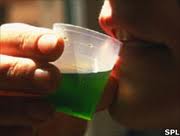Is Methadone Maintenance Treatment Just a Substitute for Other Drugs?
Heroin, as well as other opiate drugs, can all but destroy the vital chemical processes that keep the brain and body working normally. Medications like methadone specifically address the types of damage long-term opiate use can have on the body.
Methadone maintenance treatment uses a synthetic opiate-based drug that essentially gives the body time to repair and restore chemical processes back to normal. While methadone maintenance treatment does, for the most part substitute a controlled opiate medication for opiate drugs of abuse, the benefits derived from methadone maintenance treatment can far outweigh its drawbacks in treating opiate addictions.
Methadone Replacement Therapy

Methadone is an opiate but it is much safer than other drugs such as heroin.
Anyone who tries to stop using opiates after long-term use most likely experiences uncomfortable withdrawal effects combined with strong drug cravings. Since natural opiate-like chemicals form of an essential part of the body’s central nervous system functions, withdrawal and cravings result from disrupted chemical processes brought about by ongoing opiate abuse. By the time addiction takes hold, stopping opiate use essentially incapacitates brain chemical processes until equilibrium can be restored.
According to Columbia Psychiatry, methadone maintenance treatment acts as a replacement therapy designed to support damaged brain and body chemical functions until the body’s natural opiate-like chemical levels return to normal. In effect, methadone occupies the brain receptor sites most affected by opiates and replaces opiate drug effects with its own.
When taken at face value, methadone does substitute one opiate for another. Compared to opiate drugs of abuse, methadone maintenance treatment does not produce the “high” effects of euphoria and calm. In proper dosages, methadone does not create feelings of sedation nor do recovering addicts experience the compulsive need for a “fix” unlike other opiate drugs. In effect, methadone maintenance treatment acts as a therapeutic treatment whereas drugs of abuse incite the types of behaviors that drive an addiction lifestyle.
Methadone Effects
Opiate addictions, like most any other addiction, functions as a disease that grows progressively worse with time. Considering the type of damage opiate abuse causes, opiate addiction requires a targeted treatment approach that gives the body time to heal while weaning itself off opiate effects.
In a sense, methadone maintenance treatment works in much the same way insulin therapy treatments for diabetes help to restore a person’s blood-sugar metabolism functions. Insulin doses essentially compensate for low levels of insulin in the bloodstream. Likewise, methadone compensates for the body’s inability to produce its own natural opiate-like chemicals. Without this replacement/substitution function, recovering addicts are left to fend off persistent drug cravings and withdrawal effects through sheer force of will.
Methadone Maintenance Treatment Benefits
From a therapeutic standpoint, methadone produces long-acting effects while drugs like heroin and opiate pain-relief medications have short-acting effects. When administered at the proper dosage levels, recovering addicts gain relief from cravings and withdrawal effects for up to 36 hours at a time.
Compared to the emotional ups and downs experiencing from short-acting, addictive opiates, a person can lead a stable productive life on methadone maintenance treatments. This in turn allows recovering addicts to take an active part in their recovery process while at the same time participating in work, family and social activities.